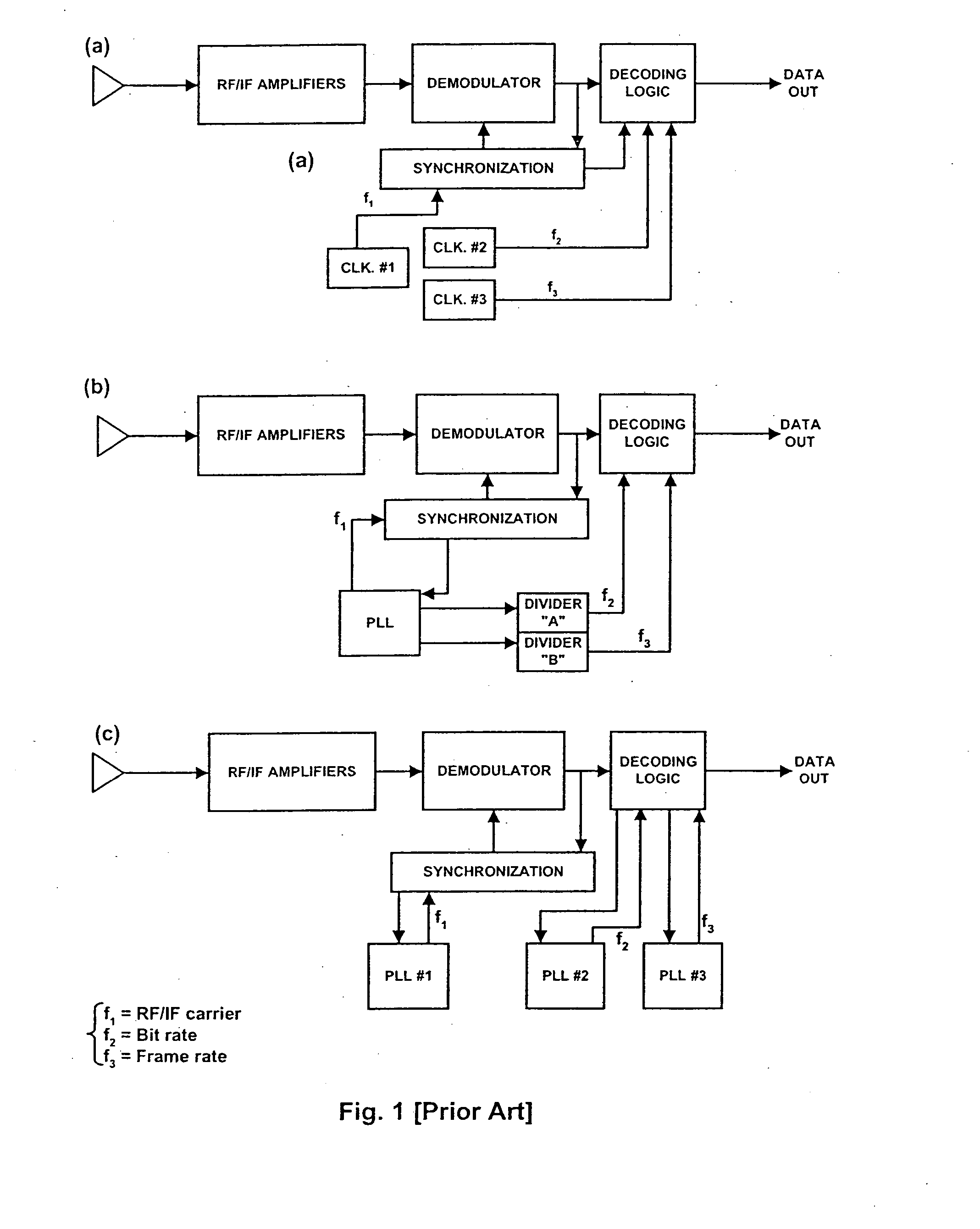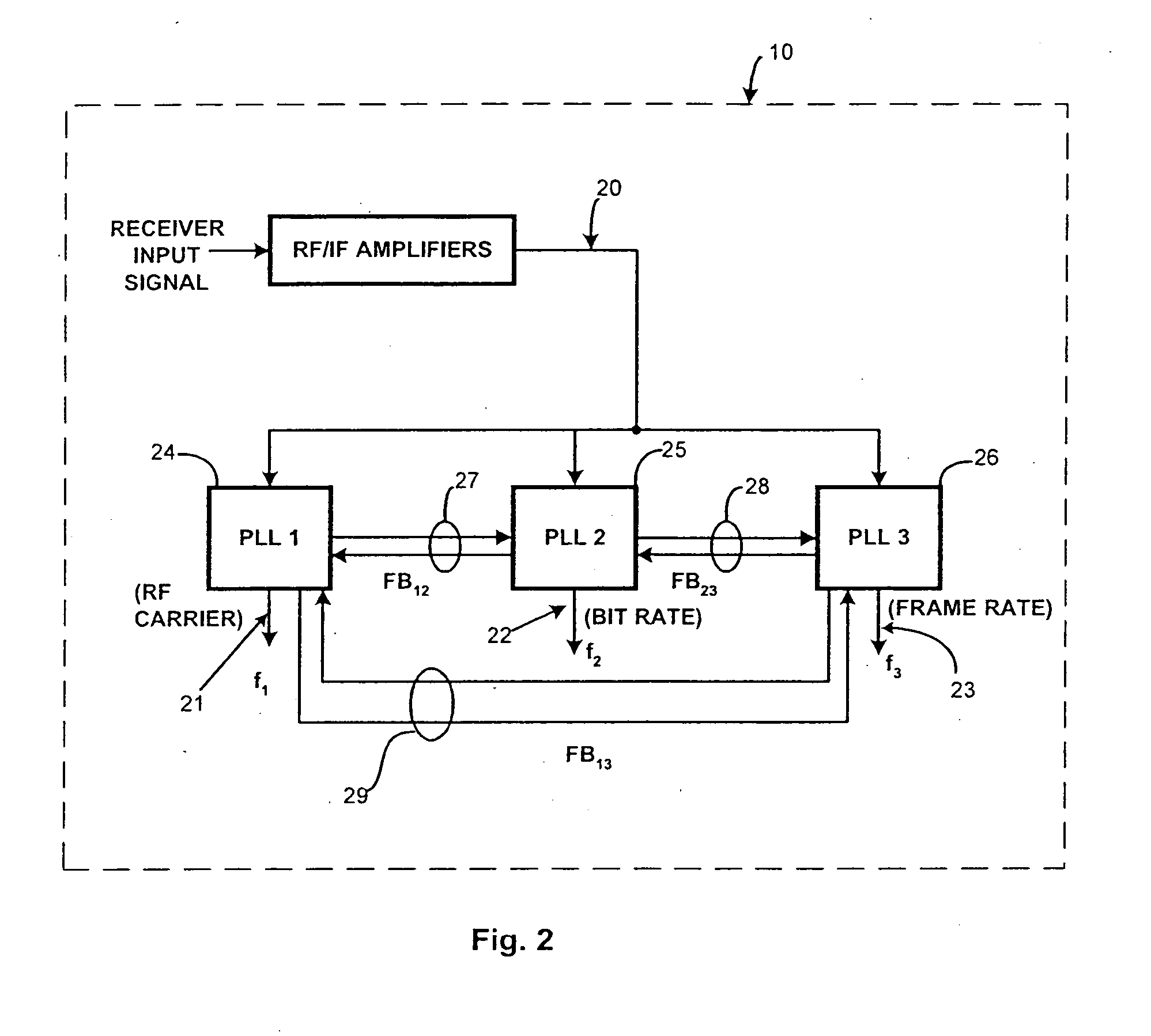Digital-data receiver synchronization
a digital-data receiver and receiver technology, applied in the field of digital-data receiver synchronization, can solve the problems of significant finesse, difficult analysis, and poor performance of most demodulators in fading and multipath (dispersive) environments, and achieve the effects of improving digital-data receiver synchronization, avoiding loss of lock, and fast lock-up times
- Summary
- Abstract
- Description
- Claims
- Application Information
AI Technical Summary
Benefits of technology
Problems solved by technology
Method used
Image
Examples
Embodiment Construction
, with exemplary circuit diagrams, is as follows.
[0057] FIG. 1 of the drawings provides typical block diagrams of receiver synchronization architectures according to the current-art techniques. FIG. 1(a) shows a basic scheme with a multiple unrelated clocks; 1(b) illustrates a single master PLL / clock with downstream dividers to generate the secondary frequencies; and 1(c) details three independent PLLs (one per frequency). FIG. 2 of the drawings is a typical block diagram of the basic functioning of the receiving system 10 of the current invention. As shown in FIG. 2, the receiving system 10 is designed to detect three distinct timing signals or frequencies of an input signal 20, such as the RF carrier f.sub.1 21, the data bit (baud rate) f.sub.2 22, and the data frame rate f.sub.3 23. In many instances there will be a need for additional timing signals to be regenerated, including but not limited to the spread-spectrum chipping clock, transmission burst rate, epoch clocks, and othe...
PUM
 Login to View More
Login to View More Abstract
Description
Claims
Application Information
 Login to View More
Login to View More - R&D
- Intellectual Property
- Life Sciences
- Materials
- Tech Scout
- Unparalleled Data Quality
- Higher Quality Content
- 60% Fewer Hallucinations
Browse by: Latest US Patents, China's latest patents, Technical Efficacy Thesaurus, Application Domain, Technology Topic, Popular Technical Reports.
© 2025 PatSnap. All rights reserved.Legal|Privacy policy|Modern Slavery Act Transparency Statement|Sitemap|About US| Contact US: help@patsnap.com



